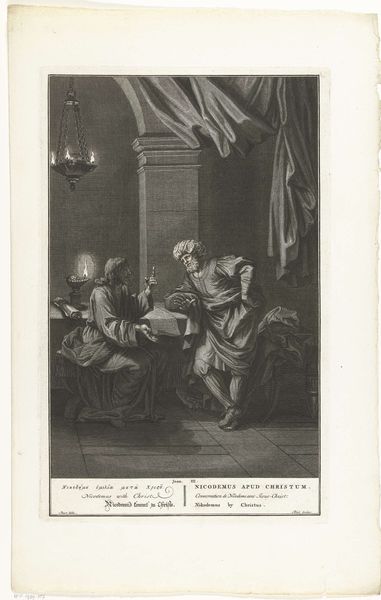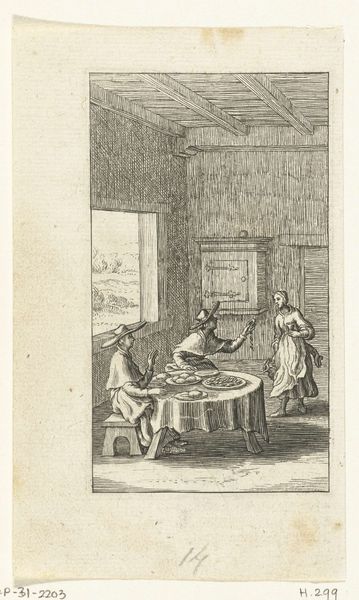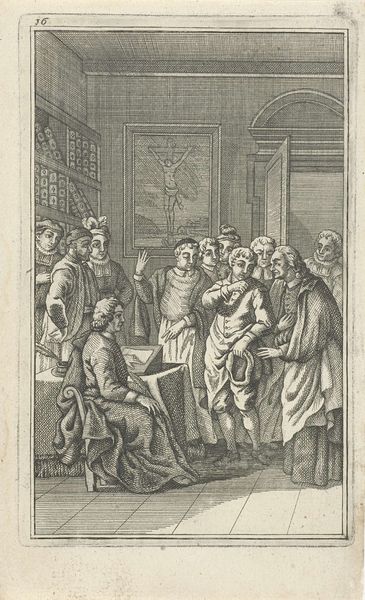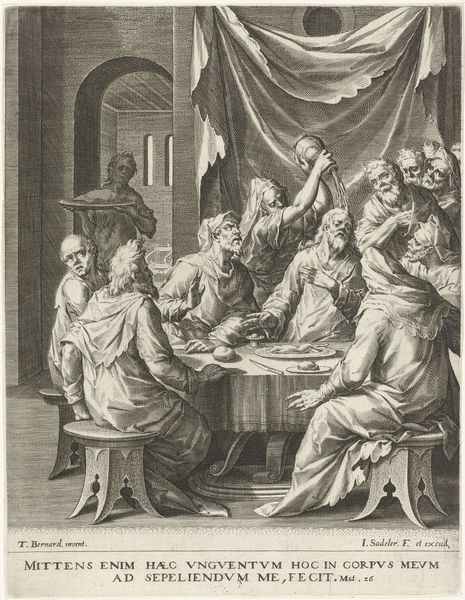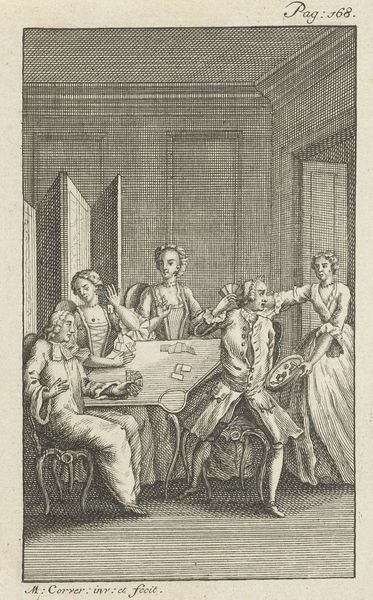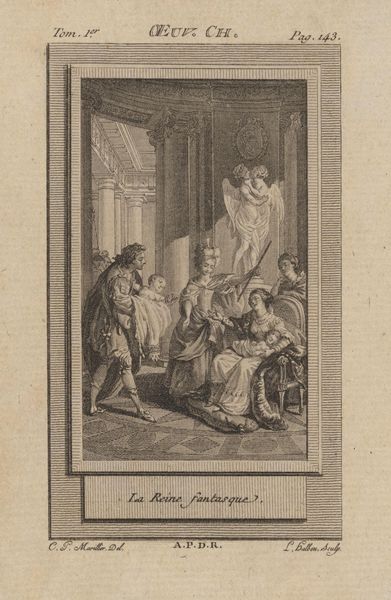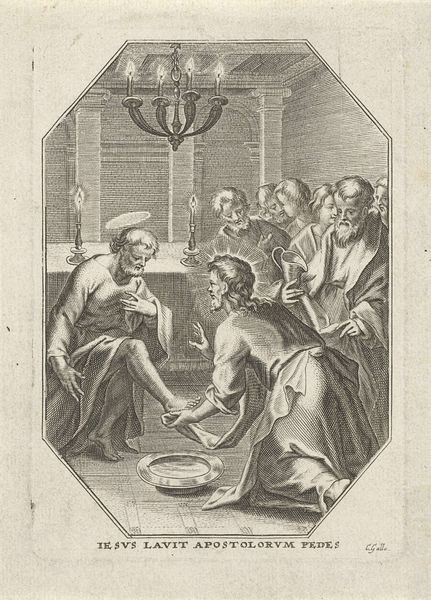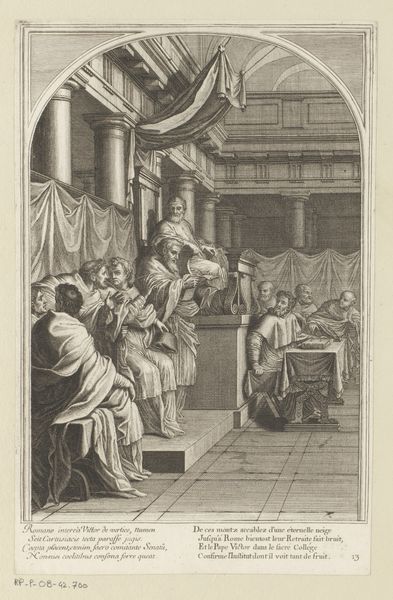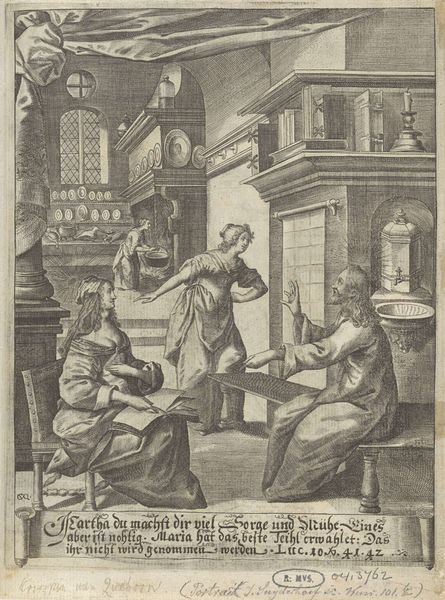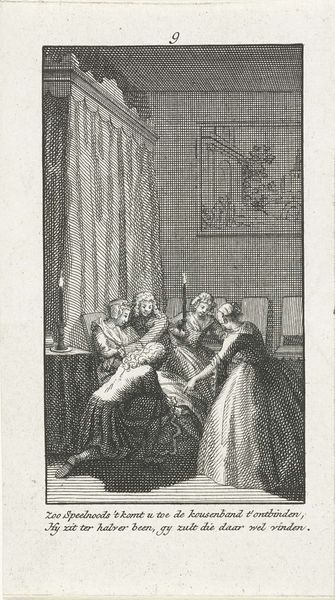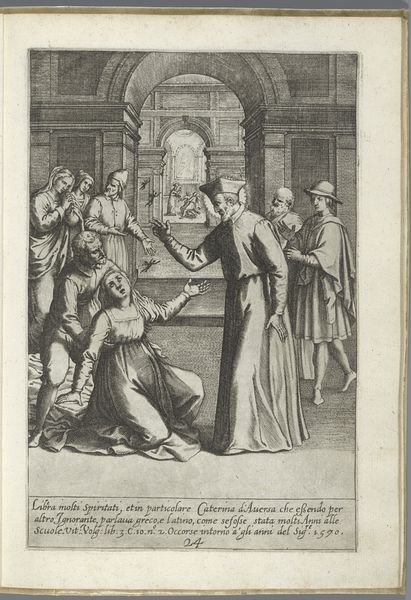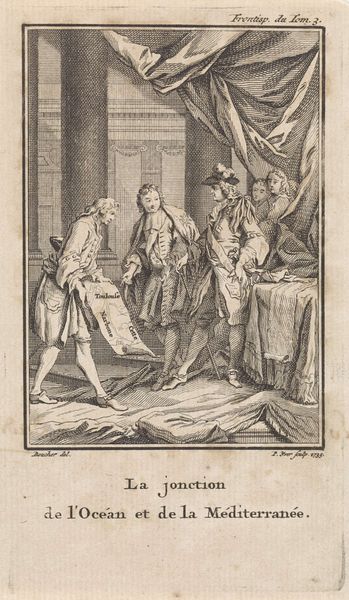
print, etching, engraving
#
portrait
#
baroque
# print
#
etching
#
history-painting
#
engraving
Dimensions: height 153 mm, width 88 mm
Copyright: Rijks Museum: Open Domain
Curator: This etching and engraving by Frans de Bakker, dating back to 1747, depicts "Karel V leent geld bij de Fuggers," or Charles V borrowing money from the Fuggers. Editor: My immediate impression is of starkness, almost theatrical. The monochrome palette, the dramatic lighting—it feels very staged, despite representing an actual historical event. It also looks like it was cheaply done; look how rudimentary and awkward the rendering of textures, like cloth, appears to be. Curator: Absolutely. Baroque art frequently employed theatrical techniques. Here, the scene emphasizes power dynamics. Charles V sits at the desk, clearly reliant on the kneeling figure with the chest of riches. The chest overflows—a very loaded symbol of dependency, especially poignant considering Charles V's Imperial status. The viewer, then, is privy to a display of commerce trumping nobility. Editor: The etching itself would be commercially produced and distributed too, as an illustration within a larger published work. That engraving method also highlights a tension: luxury depending on highly reproducible, accessible, almost 'cheap' methods. How many hands contributed to the creation and circulation of this piece? Who benefited? I imagine it must have had some didactic and ideological utility. Curator: Precisely, the distribution contributes to the overall symbolism. The piece comments on the new-money world and power it conveys. Note the symbolic laurel crown hanging limp. Editor: Right. It's a complex statement when you consider the whole trajectory of its production, distribution, and the symbolic charge, isn't it? A material document, deeply embedded within economic systems and ideological projects. Curator: I'll definitely see this differently next time. It highlights a potent juncture between history, representation, and cultural meaning, doesn’t it? Editor: And the power that is created through various tiers of consumption. Fascinating, thank you.
Comments
No comments
Be the first to comment and join the conversation on the ultimate creative platform.
